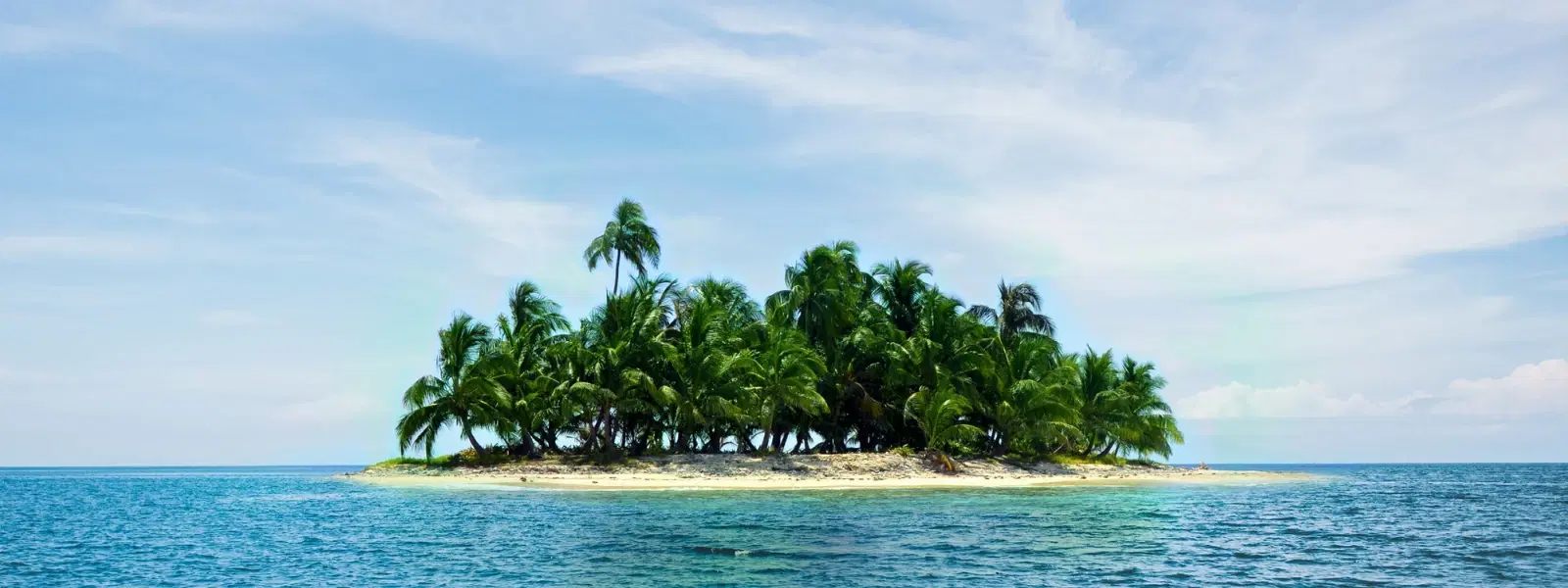
Hotels
•03 min read

Have you ever wondered why the term "desert island" conjures images of complete isolation and dramatic survival, even though it doesn’t actually mean a sandy wasteland? In literature, movies, and survival stories, a desert island stands as a symbol of escape, challenge, and purity. Today, you will explore the desert island meaning, uncover its origins, understand related synonyms, and learn about the survival challenges that inspire both thrill and introspection.
The phrase desert island meaning refers to an uninhabited island, typically one that appears isolated and untouched by human life. The term draws from the word "desert," which historically meant abandoned or empty. It is important to note that while many may confuse this with a sandy desert, the true definition points to a location that is remote and devoid of permanent human settlement. This contrast also clarifies the common mix-up with the term "deserted," which implies neglect rather than isolation.
There are several phrases closely linked to this concept, including uninhabited island meaning, isolated island concept, remote island definition, and abandoned island term. Each of these captures the idea of a place that is detached from regular human activity, though subtle differences exist. For example, while an "isolated island" emphasizes separation from society, a "deserted island" might suggest that it was once inhabited but has been left behind.
The term 'desert island' doesn’t refer to a sandy desert but rather an uninhabited or isolated island. Its origins date back to the 16th century when 'desert' meant 'abandoned' or 'empty.'
The label "desert island" has deep historical roots. In earlier centuries, explorers and writers used the term to describe islands that were free from the bustle of society. Classic literature like Robinson Crusoe immortalized the rugged charm and mystery of these lone landforms, shaping a cultural narrative that celebrates survival and introspection. This term has evolved over time, blending romanticism with harsher realities of isolation.

One common misconception is that the term implies an arid, sandy environment. However, in popular usage, what is a desert island refers to an uninhabited island, not necessarily covered in sand. This misunderstanding often arises from the similarity between the words "desert" and "deserted." While both terms suggest emptiness, the former highlights isolation without the negative connotations of neglect.
Many inspiring works of art and literature have featured desert islands as central settings. Stories of survival and adventure have captivated readers and viewers alike. From classic novels to contemporary movies and TV shows, these mysterious islands have been portrayed as both havens of peace and unforgiving landscapes. They evoke a spirit of adventure and self-reliance that resonates with anyone longing for a break from everyday life.
Beyond fiction, several real-life uninhabited islands capture the essence of the isolated island concept. Across the globe, many remote islands have untouched ecosystems and unique biodiversity. For instance, islands in parts of Greenland and the Pacific Ocean maintain their pristine nature and serve as natural laboratories for understanding ecological balance. For the Indian traveler, similar uninhabited or seldom-explored islands in the Arabian Sea or off the coast of Tamil Nadu invite exploration and a brush with nature’s untouched beauty.
When we think of castaway island meaning, we imagine a scenario where one is unexpectedly stranded. The idea of survival on desert islands encapsulates both the danger and the opportunity to reconnect with the basics of life. Numerous adventure narratives and survival guides have illustrated this rugged reality, where resourcefulness becomes the key to survival in an environment stripped of all conveniences.
Surviving on a desert island is not just about dealing with harsh elements; it also provides a chance for personal growth and discovery. The challenges include finding fresh water, procuring food, and building shelter. However, this raw setting also offers unique opportunities: the chance to learn survival skills, appreciate nature's rhythms, and even find moments of peace away from modern stressors. This duality makes the desert island narrative so compelling for various types of travelers, from the wanderer seeking spontaneous adventures to the professional yearning for a break from routine.

A desert island refers to an uninhabited or isolated island, not a sandy wasteland. The term originates from the idea of being 'deserted' or abandoned.
A desert island is an uninhabited island, often depicted in stories as a place of survival and solitude.
The term 'desert island' comes from the older meaning of 'desert,' which referred to something abandoned or empty, not related to a desert landscape.
Other names include uninhabited island, deserted island, remote island, and castaway island.
Survival on a desert island depends on available resources, skills, and ingenuity. Many stories and real-life accounts explore this theme.
In summary, the desert island meaning goes beyond its literal sense, embodying a blend of isolation, mystery, and survival. This exploration covered its definition, historical evolution, various related terms, notable examples from literature and reality, and the inherent challenges and opportunities in surviving on these remote lands. Understanding this concept provides a greater appreciation of how language shapes our cultural narratives and inspires the spirit of adventure.